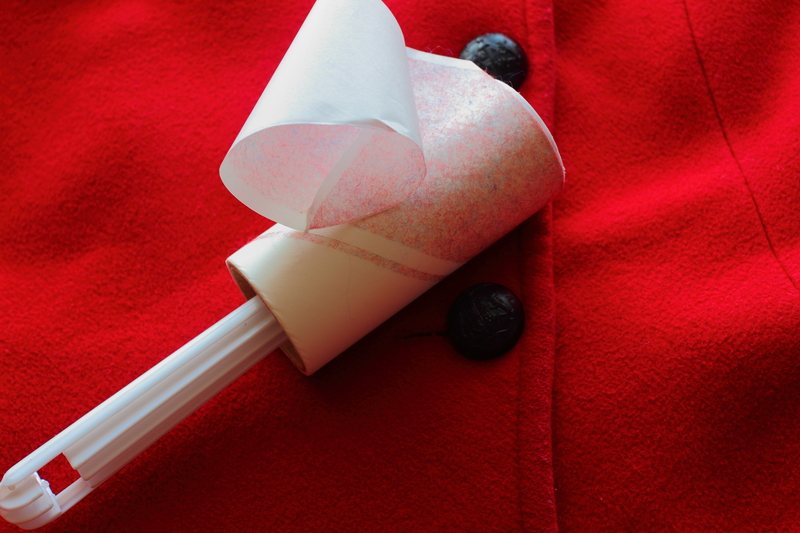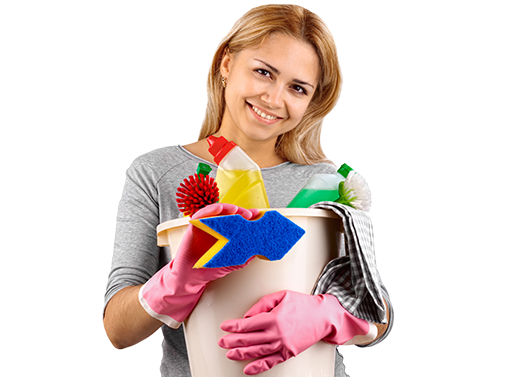Effective Strategies to Keep Your Bathroom Free of Mold
Posted on 29/09/2025
Effective Strategies to Keep Your Bathroom Free of Mold
The bathroom, with its frequent exposure to moisture and limited ventilation, is a prime spot for mold growth. Mold not only damages your home but can also have serious health implications. In this comprehensive article, you'll discover effective strategies to keep your bathroom free of mold, ensuring a healthy and pleasant environment for you and your family.
Understanding Bathroom Mold
Before we explore mold prevention techniques, it's crucial to understand what causes bathroom mold and why it thrives in this particular space.
What Causes Mold in Bathrooms?
- High humidity levels: Steamy showers and baths increase moisture content in the air.
- Poor ventilation: Limited air circulation causes moisture to remain in the room.
- Organic materials: Items like wood, wallpaper, and grout offer nutrients for mold.
- Leaking pipes or fixtures: Unaddressed leaks create consistent damp areas ideal for mold.
Mold spores are everywhere in the environment, but they require moisture and nutrients to flourish. Without the right preventive measures, your bathroom can quickly become overrun with mold colonies.

Why Is Bathroom Mold a Concern?
Persistent mold in bathrooms leads to:
- Health issues: Allergies, fungal infections, and respiratory problems are common risks.
- Structural damage: Mold degrades grout, drywall, paint, and wood.
- Unpleasant odors: A musty smell lingers where mold accumulates.
- Reduced property value: Visible mold discourages buyers and renters.
Due to these significant downsides, it's imperative to keep your bathroom mold-free through proactive and consistent measures.
Top Strategies to Prevent Bathroom Mold Growth
Let's delve into practical techniques and expert-backed strategies to ensure your bathroom stays free from mold. Each tip can be implemented easily and will make a notable difference in long-term mold prevention.
1. Improve Bathroom Ventilation
Good airflow is the key enemy of moisture accumulation. Here's how to enhance your bathroom ventilation:
- Install or upgrade an exhaust fan: A powerful, properly sized exhaust fan is essential. Run the fan during showers and keep it on for at least 20 minutes after to clear steam.
- Open windows: If your bathroom has windows, open them during and after use to let out damp air and bring in fresh, dry air.
- Leave the door open: After bathing, allowing the bathroom door to remain open helps moist air disperse into drier areas of the home.
*Remember*: Without adequate ventilation, any efforts to keep your bathroom free of mold may be in vain. Prioritize proper airflow above all else.
2. Control Moisture and Humidity
Mold cannot thrive without moisture. That's why one of the most effective strategies for mold prevention is humidity control. Experts suggest:
- Use a dehumidifier: Small, portable dehumidifiers can help maintain an optimal humidity level (ideally under 50%).
- Wipe down wet surfaces: After using the shower or bathtub, wipe the walls, glass doors, and tiles to remove lingering water.
- Fix leaks promptly: Inspect pipes, faucets, toilets, and seals regularly for leaks, and fix them as soon as possible.
- Remove damp towels and rugs: Don't let wet towels or shower mats sit in the bathroom; they breed mold. Hang them to dry in a well-ventilated area or outside.
*Tip*: Consider investing in a humidity sensor to alert you when levels become too high.
3. Use Mold-Resistant Materials
When remodeling or tackling repairs, choose mold-resistant products:
- Mold-resistant drywall: Also known as greenboard, it resists water damage better than regular drywall.
- Waterproof paints and coatings: Specialized paints can inhibit mold growth on walls and ceilings.
- Silicone-based caulk: Use around tubs, sinks, and toilets because it repels water and inhibits fungus.
- Non-porous tiles: Porcelain and ceramic tiles are less likely to harbor mold than natural stone.
Upgrading these surfaces creates a hostile environment for mold spores and makes cleaning easier.
4. Clean Regularly with Mold-Inhibiting Solutions
Routine cleaning is an often-overlooked strategy to keep your bathroom free of mold. Target visible surfaces and hidden zones:
- Scrub grout lines: Mold loves grout; use a brush and a cleaner containing bleach or vinegar.
- Disinfect shower curtains: Wash fabric curtains frequently and consider liners treated with anti-microbial agents.
- Clean hidden areas: Don't forget underneath sinks, behind toilets, and inside exhaust fan covers.
- Use natural cleaners: Vinegar, baking soda, and hydrogen peroxide naturally kill mold and are eco-friendly alternatives to chemical cleaners.
*Pro Tip*: Never mix bleach with ammonia or vinegar, as this causes toxic fumes.
5. Address Water Accumulation and Spills Immediately
Stagnant water is an open invitation for mold. Always:
- Mop up spills right away: Whether it's a splash from the sink or water outside the tub, dry it promptly.
- Use bath mats that dry quickly: Opt for rubber-backed or microfiber mats and wash them regularly.
- Install a shower splash guard: Prevent water from escaping the tub or shower with guards and door seals.
Quick reactions to water buildup directly reduce your risk of mold colonization.
6. Regularly Inspect and Maintain Bathroom Fixtures
Routine inspections play a critical role in your ongoing battle against mold:
- Check for hidden leaks: Look under sinks and behind toilet bases for signs of dampness or discoloration.
- Examine grout and caulk: Replace any cracked, peeled, or deteriorated sections to block water seepage.
- Maintain exhaust fans: Clean vent grilles and replace filters if needed.
Catching issues early helps keep your bathroom mold-free and extends the life of your fixtures.
7. Dry Out Your Shower After Use
An easy yet powerful strategy to keep your bathroom free of mold is to dry shower surfaces after each use. Use a squeegee, towel, or chamois cloth to remove water from tiles, doors, and fixtures. Keeping these surfaces dry disrupts mold's ability to take hold.
8. Declutter to Reduce Mold Habitats
Personal care products, bath toys, and loofahs can trap water and create pockets of moisture:
- Store only essentials: Keep the number of items in the shower and around the sink to a minimum.
- Hang items to dry: Use hooks or shelves so nothing sits on the floor or ledges in a pool of water.
- Replace often: Change out items like sponges and loofahs regularly to prevent mold build-up.
How to Get Rid of Existing Mold in the Bathroom
If you spot mold, take swift action. Here's how to safely remove it:
- Wear protective gear: Gloves, goggles, and a mask to prevent spore inhalation.
- Create a cleaning solution: Use one part bleach to ten parts water, or undiluted white vinegar for smaller patches.
- Scrub affected areas: Use a stiff-bristled brush and rinse thoroughly.
- Dry completely: Ensure the cleaned area is thoroughly dried to prevent recurrence.
- Dispose of contaminated items: Seriously moldy ceiling tiles, carpets, or shower curtains should be discarded and replaced.
*If the affected area is larger than 10 square feet or if mold keeps returning, consult a remediation specialist.*
Common Mistakes to Avoid in Mold Prevention
Understanding what not to do is as important as following best practices. Here are some frequent errors:
- Using wallpaper in bathrooms: It retains moisture and peels, making it a magnet for mold.
- Ignoring musty odors: Smells indicate hidden mold even if you can't see it.
- Painting over mold: This only covers up the issue; it doesn't solve the root cause.
- Leaving wet towels in the bathroom: Always hang towels outside the bathroom to dry completely.
Avoid these pitfalls for a truly mold-free bathroom experience.

Frequently Asked Questions About Mold Prevention in Bathrooms
How Often Should I Clean My Bathroom to Prevent Mold?
Ideally, aim for a deep clean once a week, paying special attention to grout, tiles, and less visible areas. Quick daily wipes after showering also help.
What Is the Best Product to Prevent Bathroom Mold?
Mold-inhibiting sprays, natural vinegar solutions, or hydrogen peroxide are popular options. Choose a product that fits your cleaning preferences and bathroom materials.
Can Houseplants Help Prevent Bathroom Mold?
Some houseplants, like peace lilies and Boston ferns, can absorb moisture, but their effect is minimal. Avoid placing too many, as their moist soil may also encourage mold.
Should I Replace Caulk if I Spot Mold?
Yes. Mold can penetrate beneath caulking. Remove and replace it with a mold-resistant version if cleaning does not remove all signs of mold.
Summary: Staying Ahead of Bathroom Mold
Maintaining a mold-free bathroom is an ongoing process that relies on vigilance, regular maintenance, and the use of mold-resistant products. By implementing the above effective strategies, you significantly reduce health risks and preserve the comfort and value of your home. Remember to consistently monitor humidity, clean thoroughly, ventilate properly, and act quickly when you spot potential mold issues. Your efforts will pay off with a cleaner, safer, and more inviting bathroom environment.
Commit to these mold prevention tips--and enjoy peace of mind knowing your bathroom remains fresh, hygienic, and beautifully mold-free.



